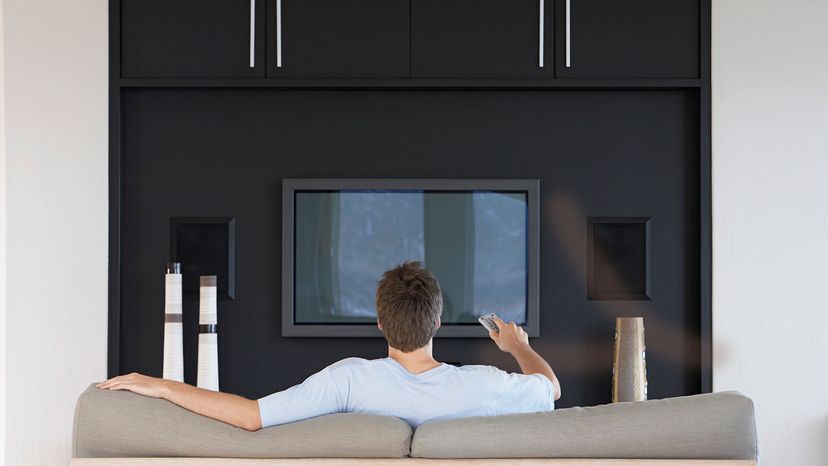How much DSE you see depends partly on the model you purchased. Pricier models generally feature improved better uniformity, mostly because manufacturers use more rigorous quality standards for their high-end products. But, no matter how much you spend, uniformity is unique to every individual unit, meaning you don't really know how much DSE you're getting until you see it in person.
Is your obsessive side getting twitchy yet? Before we discuss upping your Xanax prescription, let's review how the DSE demon begins its possession of your beloved screen.
If you own a plasma TV, the pixels are individually illuminated and all capable of achieving the same level of brightness. This tends to make DSE less visible in these devices, particularly in high-end models.
Still, DSE may afflict cheaper versions, particularly if the anti-reflective coating on the glass that overlays the screen is of low quality or poorly applied. Furthermore, as the display ages, the phosphors in the screen may begin to wear out or malfunction, all of which can contribute to less uniform images, which is often apparent particular in scenes with fast panning shots.
In LCD and LED TVs, DSE is typically a bigger issue, one that's due to the way these units are illuminated. Before we proceed, it's worth mentioning that although marketing-speak often treats LED and LCD TVs as completely different technologies, they're not different beasts.
LED units could be more accurately described as "LED-backlit LCD televisions," but salespeople and consumers alike are too lazy to utter that tongue-wearying phrase while haggling in a big-box store. What's important to realize is that both categories rely on LCDs (liquid crystal displays), which act as shutters that either block light or allow it to pass, depending on the image that's being rendered on the screen.
There are a variety of factors that affect LCD quality, notably illumination source. Older LCD TVs, for example, used multiple cold cathode fluorescent lamps (CCFL) to light LCDs from the rear. They provide generally smooth and even illumination, but they make the final product rather bulky.
More modern TVs rely on LEDs (light-emitting diodes) as a light source. Some models have what's called full-array backlighting, in which the LEDs are stationed in regular intervals behind the screen, creating even lighting and excellent picture quality.
Other models incorporate what's called edge lighting, which positions the LEDs along the edges of the screen. In general, the overall picture quality isn't quite as good as a backlit screen, but manufacturers still use it because it allows them to build substantially slimmer TVs.
Regardless of the lighting source, sometimes it's not the technology itself that results in DSE. It might be due to the way the display was handled at the factory or even en route to your home.
If you've ever pressed a little too hard on your smartphone or computer screen, you've likely witnessed a bit of discoloration, clear evidence of how sensitive LCDs are to physical pressure. Now, picture a huge manufacturing facility that cranks out thousands of these units per week. It's easy to see how a bit of mishandling could alter the screen's consistency.
The same goes for shipping. Some units travel long distances in cargo boxes, and then take bouncy rides in your car to their final resting place on your living room wall. That's a lot of opportunities for tiny mishaps to affect LCD uniformity.



